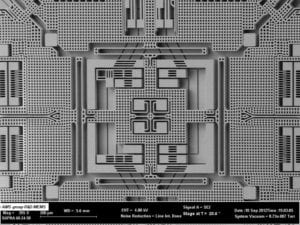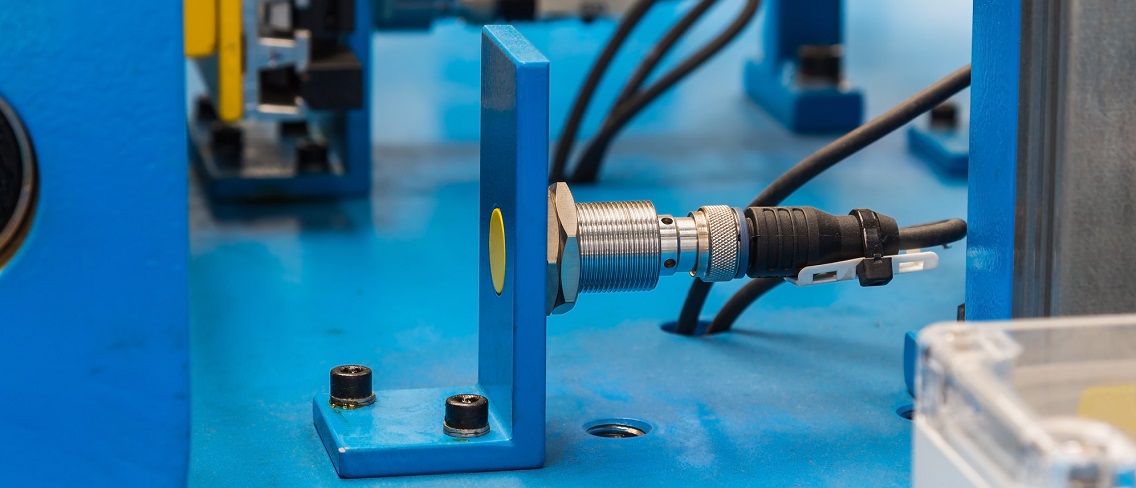ST will be showcasing its latest MEMS sensors for industrial applications at Electronica in Munich from November 13-16 so we wanted to take the opportunity to explain how MEMS technology is making its way into Industrial Applications.
A BRIEF HISTORY OF MEMS
Sensors have been around in industrial environments for over a hundred years as a critical element in process and environmental control. One of the first accelerometers was developed in 1889 and was purely mechanical. Often these sensors were designed for a target application with specific operating conditions making and they are relatively costly and time-consuming to manufacture.
 Smaller and more power efficient, MEMS (Micro-Electronic-Mechanical-Systems) sensors were originally designed to replace or upgrade some of these industrial sensors. However, the focus on industrial markets was sidetracked as MEMS quickly took off in consumer applications such as gaming and smartphones thanks to their size, performance, and low power consumption. Especially important was the possibility to manufacture MEMS using semiconductor technologies in very high quantities. As a result, manufacturers have shipped tens of billions of sensors into high-volume consumer applications in the last decade – with STMicroelectronics shipping over 15 billion alone.
Smaller and more power efficient, MEMS (Micro-Electronic-Mechanical-Systems) sensors were originally designed to replace or upgrade some of these industrial sensors. However, the focus on industrial markets was sidetracked as MEMS quickly took off in consumer applications such as gaming and smartphones thanks to their size, performance, and low power consumption. Especially important was the possibility to manufacture MEMS using semiconductor technologies in very high quantities. As a result, manufacturers have shipped tens of billions of sensors into high-volume consumer applications in the last decade – with STMicroelectronics shipping over 15 billion alone.
Now MEMS are coming back to industrial applications as one of the key enablers of Smart Industry trends like Industry 4.0 and the IIoT. As industrial systems become more autonomous, and with the proliferation of artificial intelligence and big data processing capabilities, the need for sensors that provide the critical data on processes, machine condition, and for safer factories that are more collaborative for the people working there is growing exponentially.
A BROAD SENSOR OFFERING
ST offers a range of compact, high-accuracy, high stability, low-power industrial sensors with a 10-year longevity guarantee. These include accelerometers, gyroscopes, 6-axis Inertial Measurement Units (IMU) and magnetometers. ST also offers a range of temperature and pressure sensors suitable for environmental monitoring. These sensors can be combined with microcontrollers and connectivity elements to create smart solutions for industrial equipment monitoring throughout the equipment’s lifecycle – from transport, through installation, to long-term operational maintenance. During shipment, accelerometers can be used to monitor shock and vibration while temperature and pressure sensors can monitor the environmental conditions encountered during transport. During installation, a high resolution, a high-stability inclinometer can measure inclination and other accelerometers can monitor for shock and vibration. Environmental sensors can monitor conditions during installation. These measurements enable equipment manufacturers and end customers to be sure the installed equipment has not suffered any deterioration when it is put into operation. And while the equipment is operating, accelerometers can monitor inclination and shock while microphones and environmental sensors also gather valuable information. This can all be combined to enable condition monitoring and predictive maintenance.
SENSOR ACCURACY IS KEY FOR MANY INDUSTRIAL APPLICATIONS
In many industrial settings, accuracy is a key factor. Whether it is to measure temperature and pressure control in a manufacturing process, inclination measurement for equipment installation, or vibration measurement for condition monitoring, in industrial applications, manufacturers cannot settle for second-rate sensors.
With long experience in sensors, ST knows that to build a great, accurate sensor that fits the application we need three key items: First, we need to be able to measure the phenomenon you are sensing – movement, vibration, sound, pressure etc. Here the tiny moving mechanical part and electronic elements of the MEMS device are key. The electronic part converts changes in the device characteristics caused by movement of the mechanical part into an electrical signal and then into digital information about the physical change. Next, we need the sensor to have all the right features to address the application in question – for example, the right size, the right power consumption, the right temperature range, and any smart features that it needs to fulfill the application’s needs. Finally, we need accuracy.
WHAT MAKES A SENSOR ACCURATE?
Accuracy is a measure of how closely the output from a sensor matches the ‘true’ or actual value of what the sensor is measuring. Accuracy in a sensor depends on:
- Its ability to deal with noise in the measurement environment,
- Its stability over time and ambient temperature, and
- its tolerance. the permissible limit or limits of variation.
While a sensor’s noise immunity is a function of the sensor design (mechanical and electronic), its stability and tolerance are mainly a function of testing and calibration, along with the associated algorithms that are embedded in the sensor. Manufacturers have been producing highly accurate industrial sensors in relatively low quantities up to now because of the long test and calibration times required by each sensor. This is where the consumer heritage of MEMS plays a significant role. High-volume consumer MEMS manufacturers, like ST, have a huge test and calibration capacity installed and therefore have the ability to produce industrial sensors in large volumes (relative to the volumes of industrial sensors today) using the same test and calibration equipment used for consumer sensors. Of course, the tests for industrial sensors are different from those for consumer sensors and use highly accurate stimuli, wider temperature ranges, more calibration points, multiple degrees of freedom testing and a high level of parallelism to test industrial sensors.
Let’s take the example of condition monitoring of a motor through vibration measurement. This application requires high accuracy in the measurement of vibration and stability over time and temperature in a harsh factory environment. The more accurate the measurement, the more insight the factory manager gains into the evolution of the condition of the motor. This knowledge is an important enabler of predictive maintenance where data from a large number of motors is analyzed over time to produce insights into how and when a working motor should be maintained.
Sensors have great future as one of the key enablers of Smart Industry and ST is working to make that a reality today. Check out our industrial sensors alongside a host of applications in our smart factory area at Electronica Munich November 13-16.
